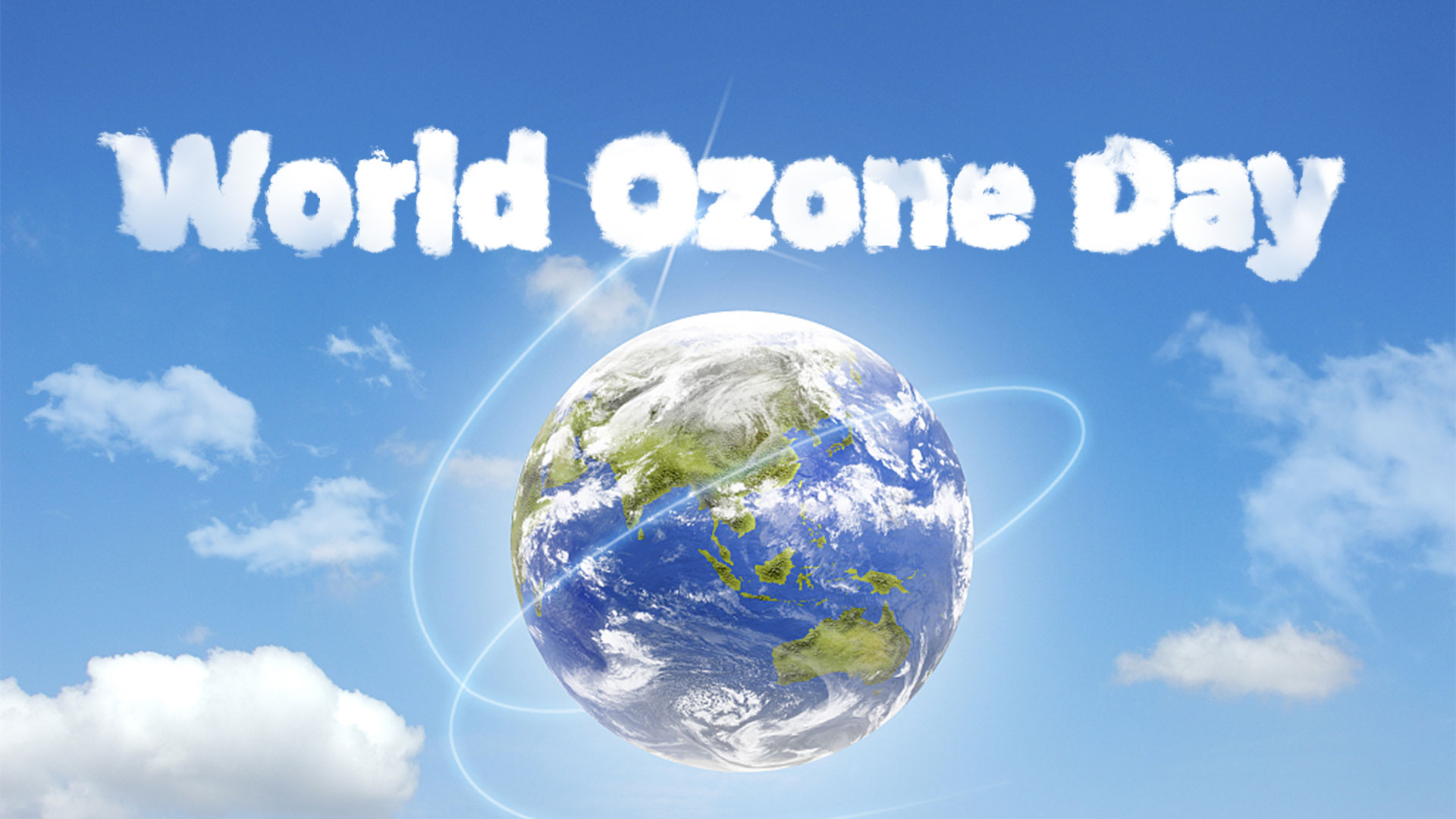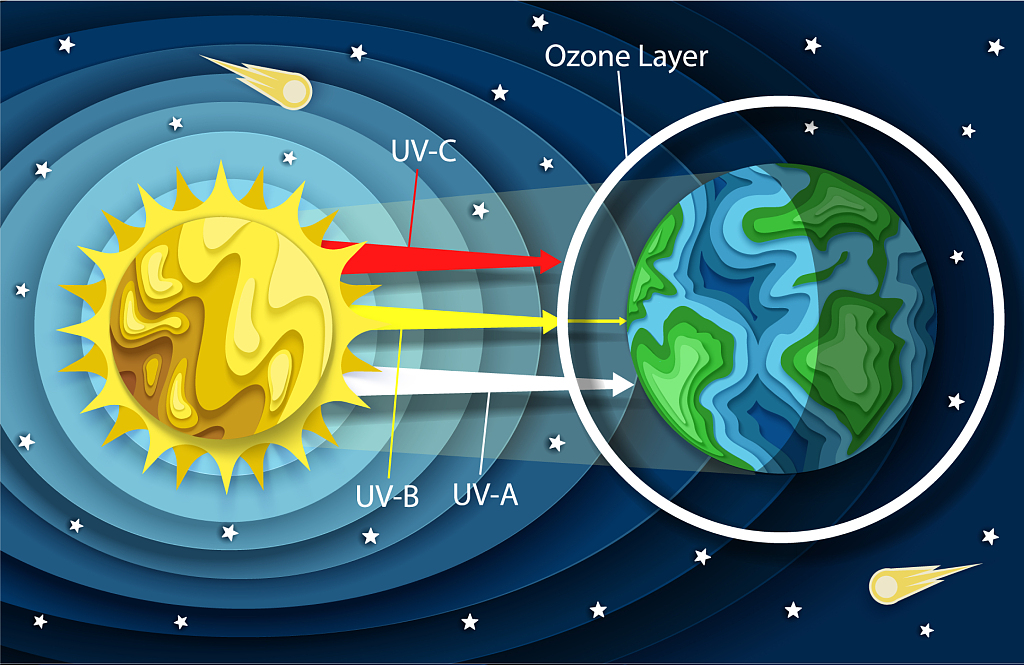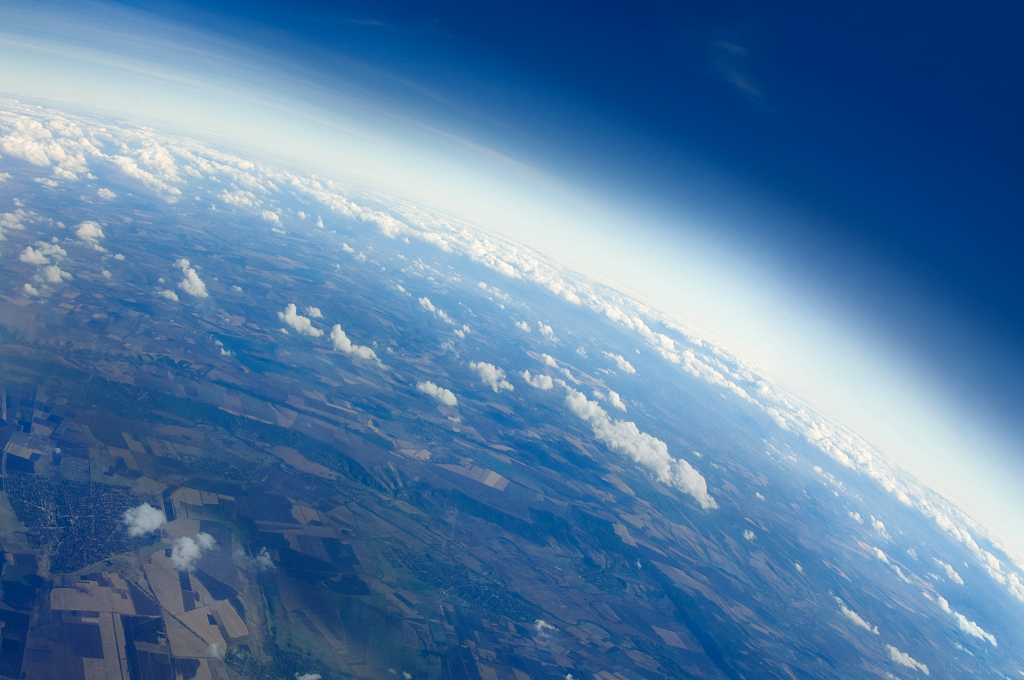World Ozone Day: Fixing the ozone layer and reducing climate change

[ad_1]

September 16 marks World Ozone Day, or the International Day for the Preservation of the Ozone Layer. The United Nations proclaimed this day as the date commemorates the adoption of the Montreal Protocol in 1985 when governments, scientists and industries worked together to cut 99 percent of all ozone-depleting substances.

How the ozone layer works to protect the Earth. /CFP
How the ozone layer works to protect the Earth. /CFP
The ozone layer is a crucial layer of the stratosphere. It absorbs almost all of the sun’s harmful ultraviolet light, therefore helping preserve all the life on Earth, including humans. In the late 1970s, scientists noticed the Earth’s natural sun screen was thinning over the Antarctic, creating what is known as an “ozone hole.”
After finding a series of man-made chemicals were the major reason for the thinning ozone layer, many governments decided to regulate the production and consumption of these chemicals referred to as ozone depleting substances (ODS). This decision was formalized in the Vienna Convention for the Protection of the Ozone Layer, which was adopted and signed by 28 countries, on March 22, 1985. In September 1987, this led to the drafting of The Montreal Protocol on Substances that Deplete the Ozone Layer.

In the late 1970s, scientists noticed the Earth’s natural sun screen was thinning over Antarctic, creating what is often known as an “ozone hole.” /CFP
In the late 1970s, scientists noticed the Earth’s natural sun screen was thinning over Antarctic, creating what is often known as an “ozone hole.” /CFP
Decades passed, and according to the latest update from the Scientific Assessment Panel to the Montreal Protocol, the ozone layer is confirmed to have recovered little by little, and the ozone levels are expected to return to 1980 levels by around 2066 over the Antarctic. However, new challenges led by climate change, especially global warming, is slowing this recovery.
The Kigali Amendment to the Montreal Protocol aims to phase down the production and consumption of hydrofluorocarbons (HFCs), which are powerful climate-warming gases that are used in place of ODS. Due to global warming, the use of air conditioners in cold chains, homes and workplaces will become excessive, and therefore more HFCs will be used. This growth in cooling must be sustainable, which means both finding safe and environmentally friendly alternatives to HFCs and increasing the energy efficiency of cooling equipment. By regulating the use of HFCs, the Kigali Amendment may result in avoidance of up to 0.5 degree Celsius of warming by 2100.
This year’s Ozone Day is held under the theme “Montreal Protocol: Fixing the ozone layer and reducing climate change.”
(Cover image via CFP. Designed by CGTN’s Liu Shaozhen.)
(If you have specific expertise and want to contribute, or if you have a topic of interest that you’d like to share with us, please email us at nature@cgtn.com.)
[ad_2]
Source link





